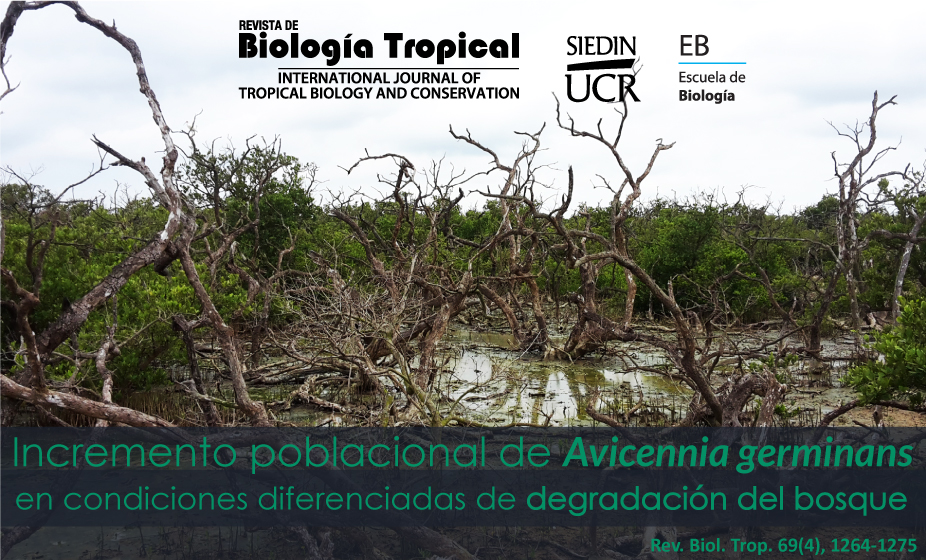Abstract
Population structure of Avicennia germinans trees (Acanthaceae) in a disturbed mangrove in the Gulf of Mexico. Introduction: Globally, mangroves are declining; characterizing their structure and regeneration at different disturbance levels can help understand their responses to stressful situations. Objective: The study's primary goal was to analyze the mangrove community structure and to estimate the populations' trajectories of Avicenia germinans at different mangrove sites that present three levels of disturbance. Methods: Eight transects of approximately 500 m in length and laid perpendicular to the Tamapamchoco lagoon, Veracruz, intersected three levels of disturbance currently present on the mangrove forest. On each transect, 10 x 10 m, 5 x 5 m, and 1 x 1 m quadrants served to account for all mangrove trees by species and stage of maturity in 2017 and 2018. Results: The most abundant species was: A. germinans followed by Rhizophora mangle and Laguncularia racemosa. Based on their abundance, we found significant differences for the three levels of disturbance (ANOSIM R = 0.6, P < 0.001) presented in a non-metric ordination (nMDS). A life table for A. germinans allowed a population analysis that showed an intrinsic rate of population increase (r) that was negative at the disturbed sites (-0.0027 and -0.0774) and positive (0.0289) at the apparently undisturbed site. Seedling to juvenile stage survival ranged from 50 % at the undisturbed site to 5 and 4 % at the disturbed sites. Conclusions: Measures to increase the survival of seedlings are necessary to reverse the decreasing population trajectories at the disturbed sites; otherwise, the mangrove will have reduced viability in the medium term.
##plugins.facebook.comentarios##

This work is licensed under a Creative Commons Attribution 4.0 International License.
Copyright (c) 2021 Revista de Biología Tropical



